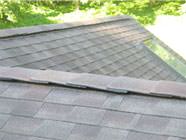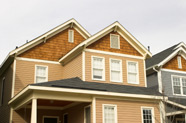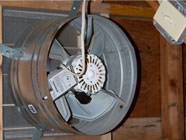Ridge Vents & Roof Ventilation
Ridge Vents & Roof Ventilation Services in Cherry Hill and Marlton
Keep your roof lasting longer with roof vents
The specialists at ECC Roofing & Siding can help you choose the right type of roof vents for your home. We can repair or install roof vents and improve your attic ventilation.
Our professional roofing services, including roof repair, are available throughout Southern New Jersey, including Marlton, Moorestown, Vineland, Clementon, Bridgeton, Sicklerville, Rancocas and nearby. Call us at 1-609-561-4355 to get a free quote on any of your roofing needs.
We Have the answers to your ventilation issues. Contact ECC Roofing & Siding at 609-561-4355 or schedule a Free estimate.
Free estimate
ECC Roofing & Siding Solutions to Roofing Ventilation
Ridge Vent
Installed along the roof peak, ridge vents are probably the most important vents in any “passive” (non-electric) roof ventilation system. Hot air that accumulates inside the attic rises by convection and escapes outside through ridge vents.
As hot air escapes, fresh outside air is drawn into the attic through soffit vents (see below).
On an asphalt shingle roof, ridge vents are usually covered by a layer of shingles. The warmest air in the attic rises naturally to the roof peak and escapes outside through the ridge vents.

Not always easy to see, the openings for a ridge vent are the continuous space on either side of the ridge cap
Soffit
Soffit vents run parallel to the eaves along the soffit. These vents work with ridge and gable vents to promote good roof ventilation.
Installed along the eaves of the roof, these vents are usually in the form of grilles that run the length of each soffit.
By admitting outside air into the attic as warmer air leaves the attic through higher vents, soffit vents play a major role in effective roof ventilation.

Soffit vents may run continuously under eaves. Rectangular or circular vents may be installed in soffits where a continuous strip-type vent was omitted.
Gable-end vents
Installed near the peak of a gable end, this screened vent can allow hot air to leave the attic or fresh air to enter, depending on prevailing breezes and temperature conditions.

If attic airflow is insufficient, your roofer may recommend a gable end vent such as the one shown.
Powered attic ventilators (PAVs).
Sometimes referred to as attic fans, PAVs come in several forms. Some are designed to be mounted on the roof, while others mount in the attic floor or the gable end. All PAVs contain an electrically powered fan (usually controlled by a thermostat) that exhausts hot air from the attic on hot summer days.
A PAV should not be necessary if a roof has properly sized and installed ridge and soffit vents. While a PAV will definitely exhaust hot air from the attic during hot weather, it consumes electricity, and can actually suck cooled air from the living space through leaks in the attic floor.
For this reason, many home energy experts recommend passive roof ventilation over active ventilation with a PAV.

We want to earn your business by being responsive and providing top-quality services at reasonable costs. Here’s what you can count on when you call on ECC Roofing & Siding:
Installing soffit, gable & ridge vents to ventilate your attic in NJ
The Importance of Roof Ventilation
It’s understandable that roof ventilation is often overlooked, as most people are primarily concerned with the ability of their roof to keep their home dry. However, a well-ventilated roof can do much more than that. It can significantly enhance the quality of life for those residing beneath it. Proper roof and attic ventilation not only contribute to a drier environment but also play a vital role in lowering heating and cooling costs, improving interior comfort, and extending the lifespan of your roof shingles.
Energy Savings in Summer
During the summer months, a well-ventilated roof becomes your ally in keeping your home comfortable and energy-efficient. By allowing hot air to escape from the attic, proper ventilation reduces the demand on your air conditioning system, translating into cost savings and a cooler indoor environment.
Winter Roof Protection
When winter arrives, the benefits of ventilation continue. Paired with effective attic insulation, proper ventilation ensures that the roof surface remains cold. This prevents snow from melting on the roof surface and subsequently freezing to form ice dams along the eaves, a common winter roofing issue that can lead to costly damage.
ECC Roofing & Siding’s Expert Roofing Solutions
At ECC Roofing & Siding, we specialize in ensuring your roof functions optimally year-round. Our experienced team can install and repair ridge vents and various other roof ventilation systems. We take pride in being Southern New Jersey’s trusted roofing contractors, offering a comprehensive range of roofing solutions, including roof repair and replacement. Whether you’re in Voorhees, Mount Laurel, Cherry Hill, or anywhere throughout New Jersey, our experts are ready to provide a free quote for ridge vent installation and discuss how proper ventilation can improve your home’s efficiency and comfort.





